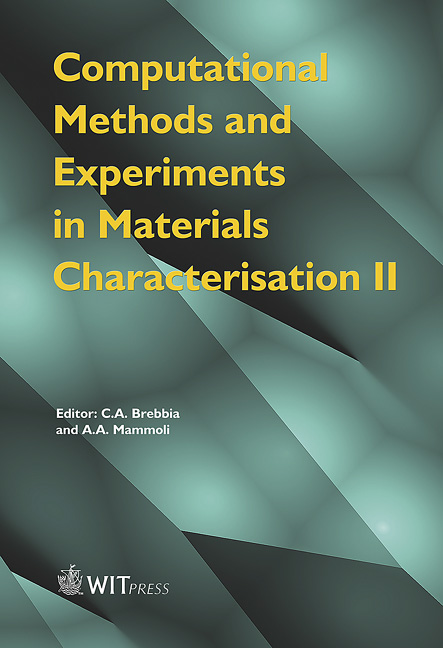Using Synchrotron Computed Microtomography To Quantify 3D Micro Geometrical Changes In Multimaterials
Price
Free (open access)
Transaction
Volume
51
Pages
11
Published
2005
Size
3,024 kb
Paper DOI
10.2495/MC050181
Copyright
WIT Press
Author(s)
D. Bernard
Abstract
Synchrotron microtomography is a non-destructive 3D-characterisation technique providing a three-dimensional mapping of the linear X-ray absorption coefficient (µ) of the material under investigation. When the considered sample is composed of different materials having dissimilar µ values, this mapping can be transformed into a 3D image of the different constitutive materials. Furthermore, microtomography being non-destructive, it is easy to follow the evolutions of a unique sample in 3D and with an unrivalled precision. To illustrate those points, the 3D-microstructure evolutions of two samples submitted to two different processes are presented. In the first case a lithium borate powder sample is followed during natural sintering. Morphological changes and a solid-solid phase change are quantified in 3D. In the second case, the modifications induced by reactive percolation of CO2 saturated water within a natural limestone sample are characterized. The process permitting one to proceed from the data acquired on the tomography beam line to a series of 3D images of the same sample at the different stages of its evolution is presented. Keywords: synchrotron, microtomography, 3D image analysis, multi-materials, microstructure evolution, sintering, reactive percolation, dissolution, CO2 geological storage. 1 Introduction Generally speaking, tomography is an imaging technique that can be used to outline the interior of objects, and to measure their organisation in space and time in a non-destructive way. It is based on the use of penetrating rays like
Keywords
synchrotron, microtomography, 3D image analysis, multi-materials, microstructure evolution, sintering, reactive percolation, dissolution, CO2 geological storage.





